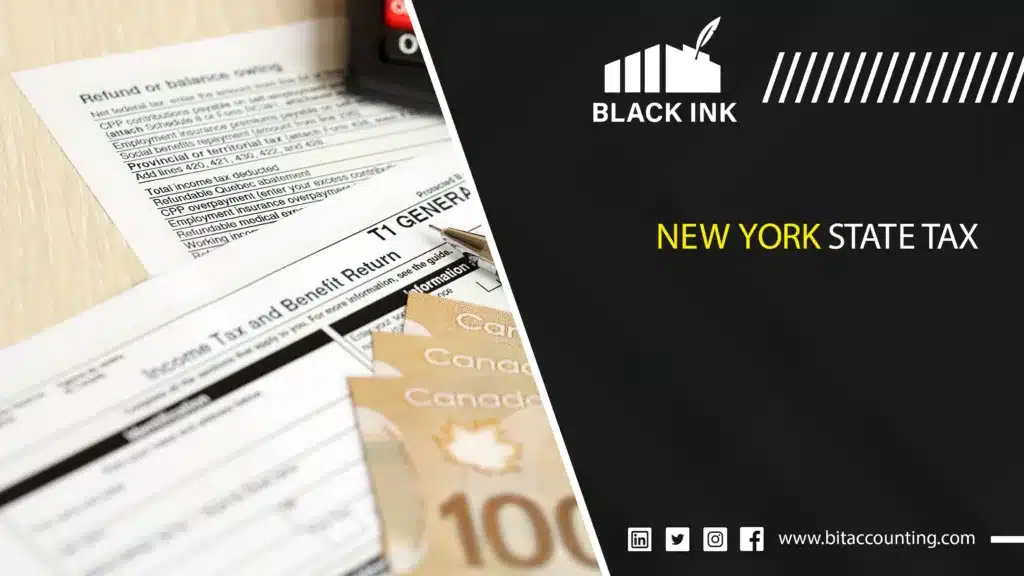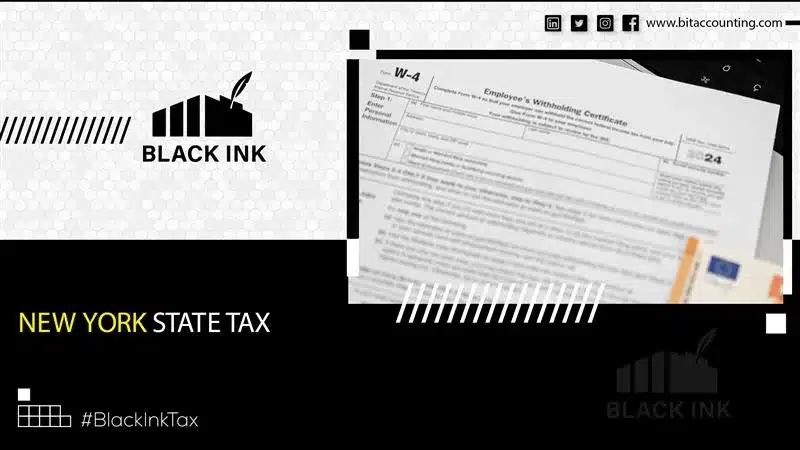
Table of Contents
New York State Tax: Everything You Should Know
A key component of government functioning is taxes. They pay for the other services maintaining good operation, public safety, schools, roads, and so on. Every state in the United States handles taxes somewhat differently. Should you live or work in New York, you will have to learn how New York State Tax runs. This article will walk you through what you’ll need to know about the Empire State’s taxation if you live there, own a business, or are moving to New York.
What is New York State Tax?
New York State Tax is the taxes the New York government gathers to support public services. These taxes assist public finance, education, health initiatives, transportation, and worker services among other things. New York, like other states in the United States, gathers many kinds of taxes including income tax, sales tax, and property tax.
This tax system is a component of the bigger tax system in the United States and significantly influences the United States economy. It supports public sector jobs and builds infrastructure. These taxes closely follow United States legislation and follow guidelines established by both the state and the federal government of the United States.
Who Needs to Pay NY State Tax?
If you are a resident of New York (state) or earn money within the state, you most likely need to pay state income tax. This applies to:
- People living full-time in New York
- People who work in New York but live in another state
- People who own businesses or property in New York
- Freelancers and self-employed individuals
You may also need to file a tax return even if you don’t owe taxes. Filing helps determine if you’re due a tax refund or qualify for any tax credits, such as the earned income tax credit.
Types of NY State Taxes
New York collects several types of taxes that help power its economy, support public policy, and keep the governance system running.
New York Income Tax
The income tax in the United States encompasses both federal and state levels. In New York, income tax is based on your adjusted gross income, filing status, and how much you make. The tax system is progressive, meaning persons with more income pay a higher tax rate.
New York Income Tax Rates – Single & Married Filing Separately
If your taxable income is: | Your tax rate is: |
$0 – $8,500 | 4% |
$8,501 – $11,700 | $340 plus 4.5% of the excess over $8,500 |
$11,701 – $13,900 | $484 plus 5.25% of the excess over $11,700 |
$13,901 – $80,650 | $600 plus 5.5% of the excess over $13,900 |
$80,651 – $215,400 | $4,271 plus 6.% of the excess over $80,650 |
$215,401 – $1,077,550 | $12,356 plus 6.85% of the excess over $215,400 |
$1,077,551 – $5,000,000 | $71,413 plus 9.65% of the excess over $1,077,550 |
$5,000,001 – $25,000,000 | $449,929 plus 10.30% of the excess over $5M |
Over $25,000,000 | $2,509,929 plus 10.90% of the excess over $25M |
New York Income Tax Rates – Married Filing Jointly
If your taxable income is: | Your tax rate is: |
$0 – $17,150 | 4% |
$17,151 – $23,600 | $686 plus 4.5% of the excess over $17,150 |
$23,601 – $27,900 | $976 plus 5.25% of the excess over $23,600 |
$27,901 – $161,550 | $1,202 plus 5.5% of the excess over $27,900 |

New York Income Tax Rates – Head of Household
If your taxable income is: | Your tax rate is: |
$0 – $12,800 | 4% |
$12,801 – $17,650 | $512 plus 4.5% of the excess over $8,500 |
$17,651 – $20,900 | $730 plus 5.25% of the excess over $11,700 |
$20,901 – $107,650 | $901 plus 5.5% of the excess over $13,900 |
$107,651 – $269,300 | $5,672 plus 6% of the excess over $80,650 |
$269,301 – $1,616,450 | $15,371 plus 6.85% of the excess over $215,400 |
$1,616,451 – $5,000,000 | $107,651 plus 9.65% of the excess over $1,077,550 |
$5,000,001 – $25,000,000 | $434,163 plus 10.30% of the excess over $5M |
Over $25,000,000 | $2,494,163 plus 10.90% of the excess over $25M |
New York Sales Tax
Sales tax is charged when you buy goods or certain services in New York. The state sales tax is 4%, but local governments (like New York City or Westchester County, New York) can add their own percentage, making it as high as 8.875%.
- This money supports services (economics) such as police, libraries, and transit.
- Businesses must collect and send these taxes to the state government.
New York Property Taxes
Property tax is based on the value of land or buildings you own. These taxes support local services, such as schools and emergency departments.
- Property owners, including corporations, must pay this annually.
- Property tax rules may vary by county, with Yonkers, New York and Westchester County having their own guidelines.
How Do You Pay New York State Taxes?
Paying taxes in New York is now easier thanks to online tools and professional help like Certified Public Accountants. You can:
- Use the Internal Revenue Service (IRS) website or New York State Department of Taxation and Finance portal
- Mail a check or IRS tax forms
- Have taxes withheld from your paycheck by your employer
- Set up electronic payments for businesses and personal income taxes
Keeping track of your net operating loss, wages, and taxable income is essential. If you’re unsure, it’s a good idea to get help with tax preparation in the United States.
When are New York State Tax Returns Due?
Most years, your tax return is due by April 15, the same as the federal tax return. If this date falls on a weekend or holiday, the due date moves to the next business day.
Late filing can lead to penalties, tax levies, or garnishment of wages. Filing on time also helps you claim any tax refund or earned income tax credit.
Make sure to keep your records, privacy information, and tax forms safe and secure, following public law and tax policy guidelines.
Conclusion
Understanding New York State Tax doesn’t have to be hard. With simple knowledge of how income tax, sales tax, and property taxes work, you can stay on top of your personal taxes and business economics. Whether you’re dealing with corporate finance, employment, or just everyday expenses, being aware of tax rules helps you manage your money better.
And if you need help? That’s where Bit Accounting comes in. We offer expert help in filing your tax returns, organizing your financial information, and making sure you don’t miss out on refunds or credits. Let us make taxes simple for you!
FAQs
- Do I have to pay New York State Tax if I live in another state but work in New York?
Yes, if you earn income in New York, you are likely required to pay state income tax on that income, even if you live elsewhere.
- What is the difference between federal and state income taxes?
Federal taxes go to the federal government of the United States, while state taxes support your local government. Each has its own rates, rules, and deductions.
- Can I get a tax refund from New York State?
Yes, if you paid more than you owed or qualify for credits like the earned income tax credit, you might receive a tax refund.
- How can I lower my New York State Tax bill?
You can lower your bill with itemized deductions, tax credits, and smart personal finance strategies, like investing in retirement accounts.
- Is property tax included in state income tax?
No, property tax is a separate payment and is usually handled by your local county or city government.
Get a Free Quote Today For All of Our Services
Fill out the form below and we will send you a free analysis of your current state and what would be the cost of managing either a separate accounting and bookkeeping services or a complete solution across South Carolina, USA. Do get in touch and we will be happy to consult you with our bookkeeping services in SC, South Carolina, USA.
GET FREE QUOTE FOR ALL OF OUR SERVICES
CharlestonTaxcity will send you a free analysis of your current state and what would be the cost of managing either a separate accounting and bookkeeping services or a complete solution across South Carolina, USA. Do get in touch and we will be happy to consult you with our bookkeeping services in SC, South Carolina, USA.

